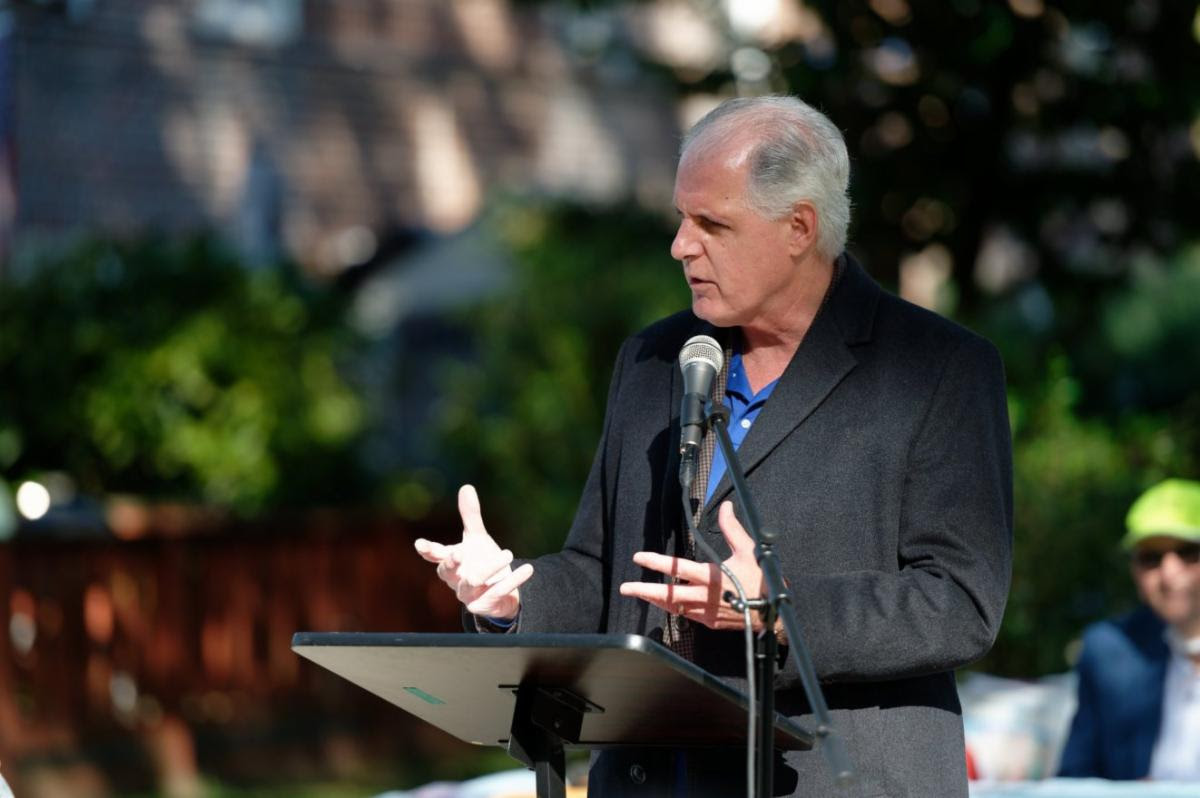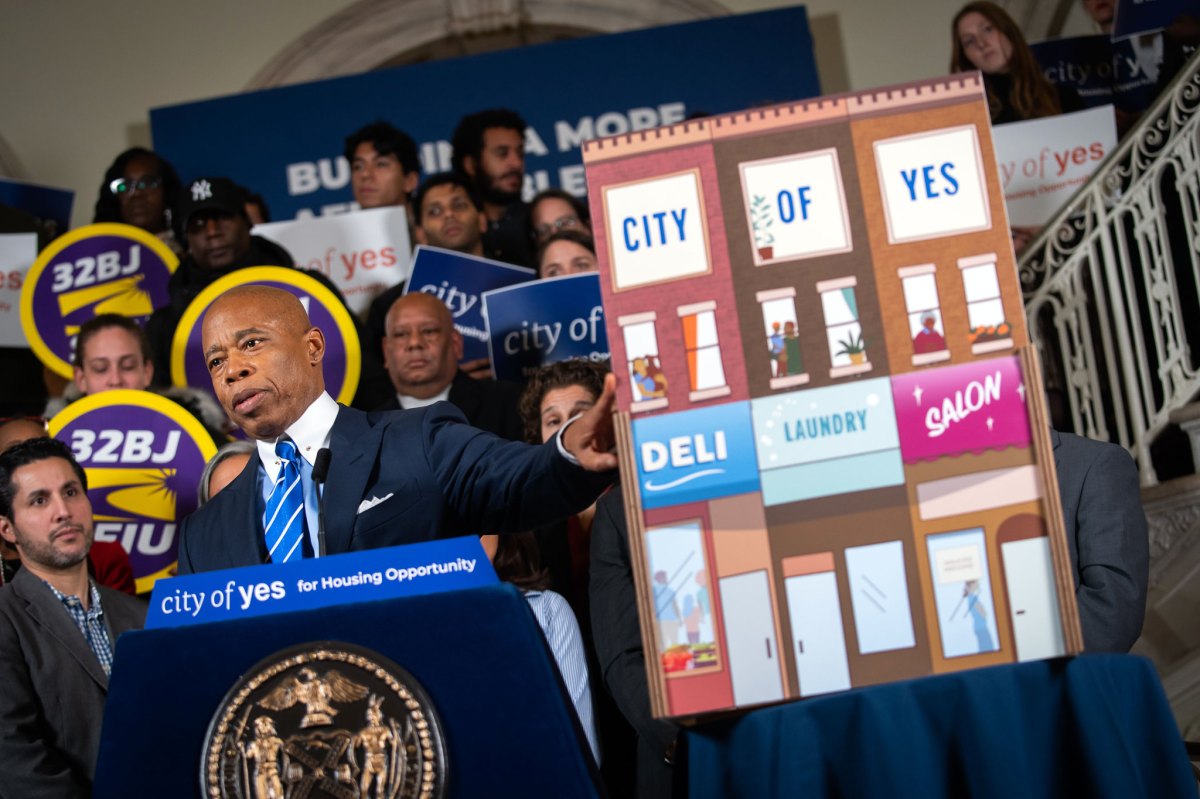
With trying commutes on the horizon for L train riders, real estate brokers and renters are waiting anxiously to see how L train shutdown talks play out.
“You’re talking about taking the heart out of Brooklyn and Manhattan,” said Dave Maundrell, an executive at the real estate firm Citi Habitats.
Maundrell, a Williamsburg native, said he noticed his neighborhood pivot away from the ethnic delis and bodegas beginning around 1992 toward what eventually became the luxury condos and chain coffee shops of today.
The convenience of the L train route connecting Canarsie through the middle of downtown was integral in precipitating the change. With 400,000 average weekday riders, the MTA says L train ridership has tripled since Maundrell began watching his neighborhood transform.
“It’s the golden rule in real estate: How far away are you from public transportation?” Maundrell said. “There wouldn’t be the Williamsburg of today if it weren’t for the L train.”
Superstorm Sandy hit the train’s Canarsie Tube the hardest in 2012. It flooded the line with 7 million gallons of corrosive saltwater, knocking out service for 11 days. Every facet of the two tubes were damaged.
To avoid unplanned service shutdowns due to the crumbling infrastructure, the MTA is currently deciding between two painful options to repair the 92-year-old cast iron and concrete-lined Canarsie Tube. With either pick, the MTA anticipates that the reconstruction will be the most impactful in the agency’s history.
The MTA plans to decide on its two shutdown proposals by June or July so that it can begin with its contracting process. One option on the table would bring complete shutdown of service between the 8 Avenue and Bedford Avenue stations for 18 months during repairs. Another would close one of the two Canarsie tunnels at a time, offering service limited by 80 percent between Brooklyn and Manhattan over the course of a 3-year construction period.
During the shutdown, slated for 2019, the MTA will beef up its J, M and G lines, offer shuttle buses over the Williamsburg Bridge and add Select Bus Service for crosstown Manhattan trips.
Some in real estate say either option could have a ripple effect on the market at around mid-2018 that would drive would-be, one-year renters in Williamsburg or parts of Bushwick to other areas close to the J or G, like Clinton Hill or Bedford Stuyvesant.
Others find little merit to the rumors.
“Part why it’s so difficult to speculate is because it’s hard to predict commuter behavior until the option is taken away from them,” said Masha Burina, an organizer at Riders Alliance, which is seeking online input from commuters on the shutdown. “There are so many ways to get around the city.”
Andrew Barrocas, CEO of the real estate firm MNS, said he wasn’t worried about any lasting impact of the shutdown, describing the repairs as a “hiccup” in Brooklyn’s growth.
“You hear people saying that it’s going to create an opportunity to buy property,” he said. “I don’t agree with that. I don’t think people are going to start fire selling their properties because of this.”
Both Borrocas and Maundrell prefer the longer, temporary shutdown – even if it would limit L trains to serve just one fifth of the usual ridership.
“You can’t shut it down completely,” Maundrell said. “You have to think of who this line serves. It’s not just the high end Bushwick residents. It’s more diverse – students, blue-color workers and so many others who really rely on this train.”
As Oren Tamir grabbed a bite on the stoop of a popular Middle Eastern joint near the Bedford Avenue stop, he thought about the recent inquiries coming into his office at Bedford Lofts.
“A lot of people calling up are already asking about property away from the L, near other trains,” said Tamir, an Upper East Sider and broker at the firm. “They ask about the shutdown and I tell them it’s too soon to talk about that.”
The residents passing him by on Bedford Avenue seemed to already be scheming a move.
“I’ve thought about it for sure – maybe move to Queens,” said Kristen Hunter Rowe, an East Williamsburg resident and business student at Hunter College. “I’m not sure how I’m going to get to school.”
Jacquelin DeJesu Center, a Cobble Hill native and business owner, commutes into Manhattan from the Marcy Avenue M stop in Williamsburg. She said she was definitely considering a move before the shutdown.
“My main concern as an M train rider is how will the L train overflow affect my commute?” she asked. “Commuting convenience is so important.”
Farther east along the L, shutdown worries directly correlated to how far away commuters lived from other train lines. In East New York, Robyn Glenn, a retired Verizon employee, said she was close enough to the 3 train to switch comfortably for the trips into Manhattan she takes several times a week.
“There are just going to be so many people trying to get on the shuttle buses,” Glenn told AM New York before a recent L train public hearing.
Damian Grecco, a native Staten Islander out recently to see a concert near the Jefferson Street L station, shrugged off the real estate speculation to “media hysteria.”
“From a practical standpoint, people will be locked in leases. They won’t be moving out,” he said as he walked down Jefferson Street. “This place used to be mayhem in the ’70s and ’80s. There were needles on this street. So there’s living around that and then there’s living around when a train that sometimes doesn’t come when you want it to.”
Francisco Perez, a photographer living in Bushwick who said he takes trips on the L train about five times a week, said he wasn’t too concerned about the shutdown because he hopes to own a car by then.
“Or else I’ll have to take the J train,” he said. “But I hate the J.”



































